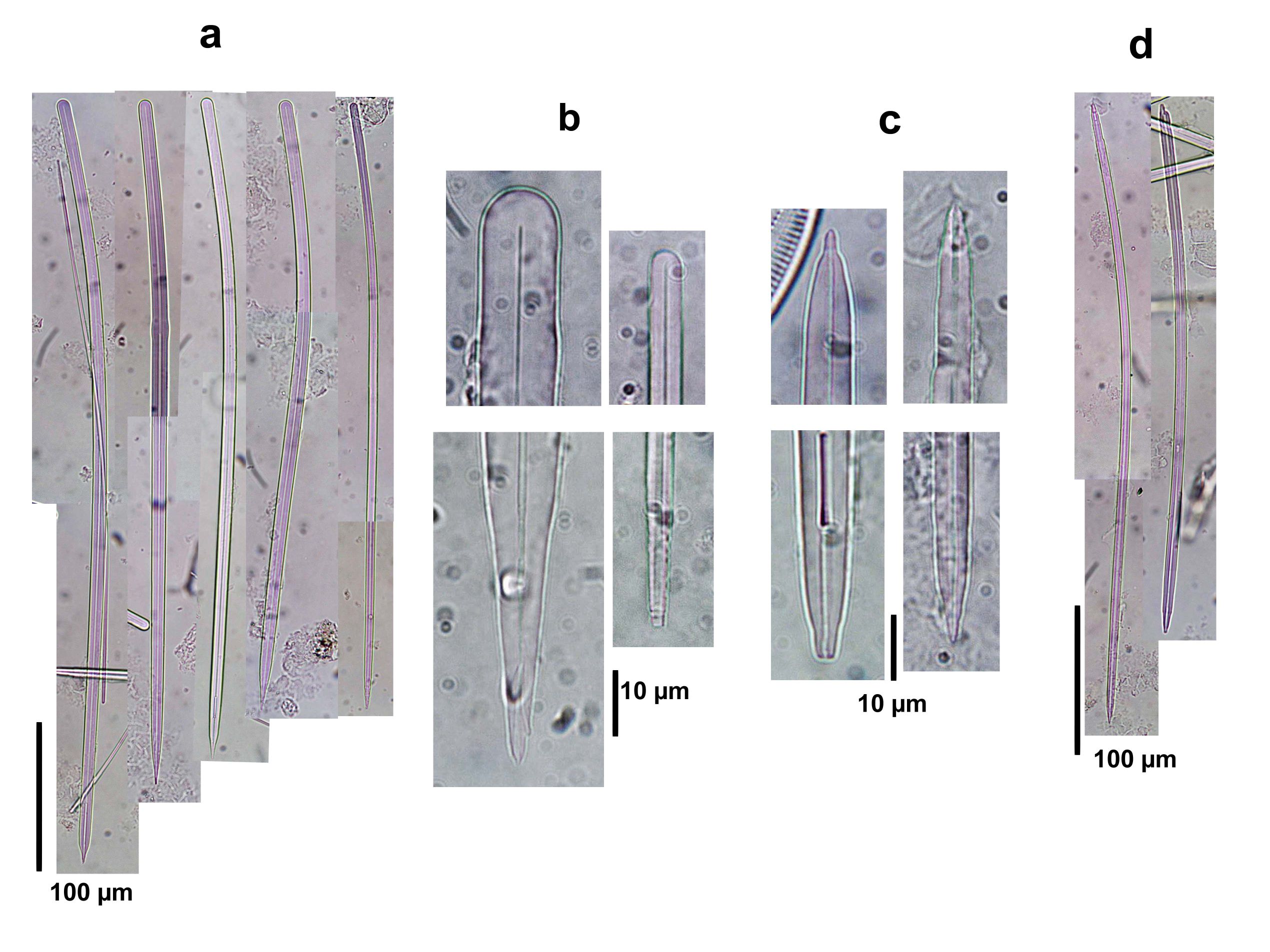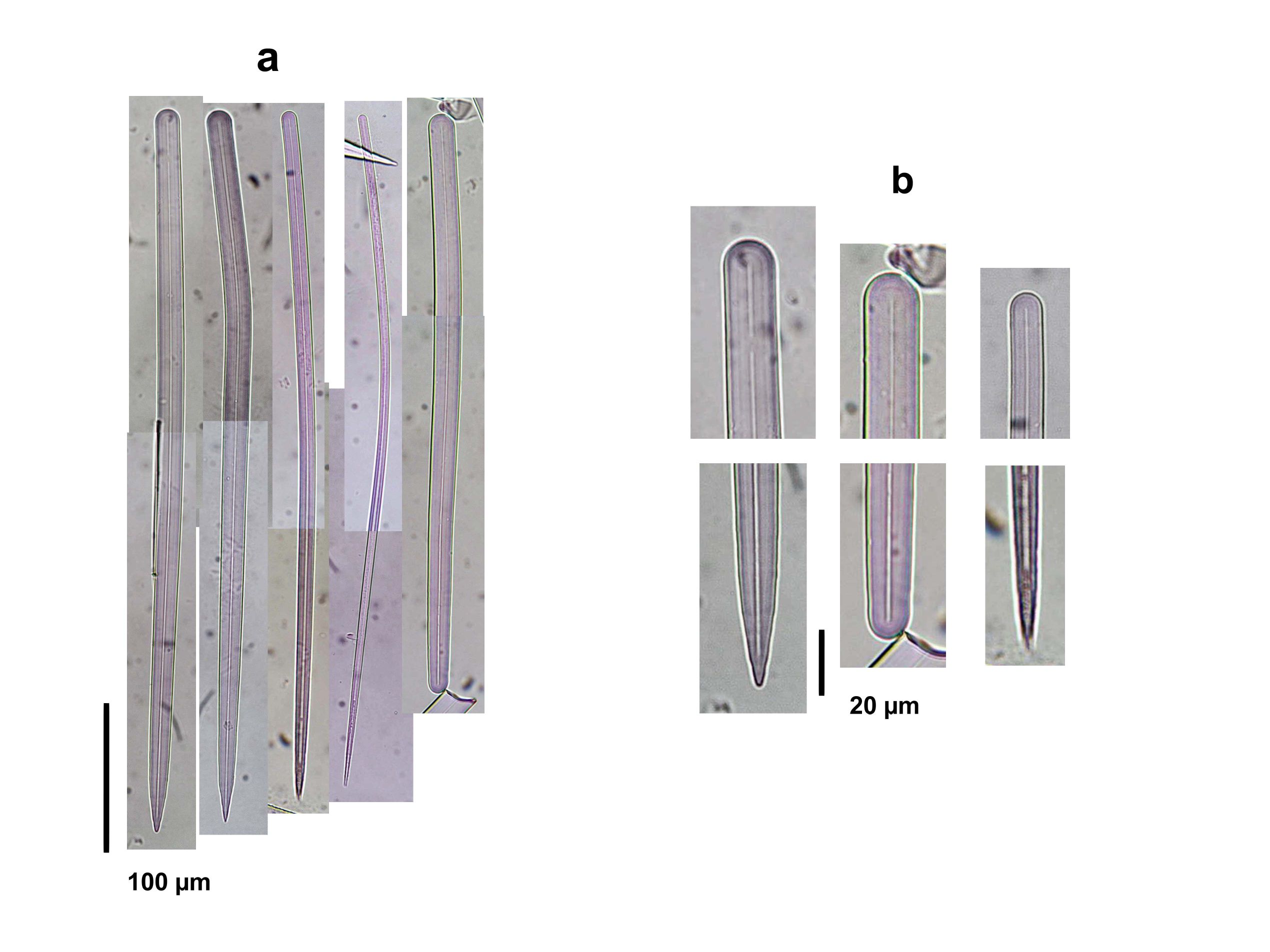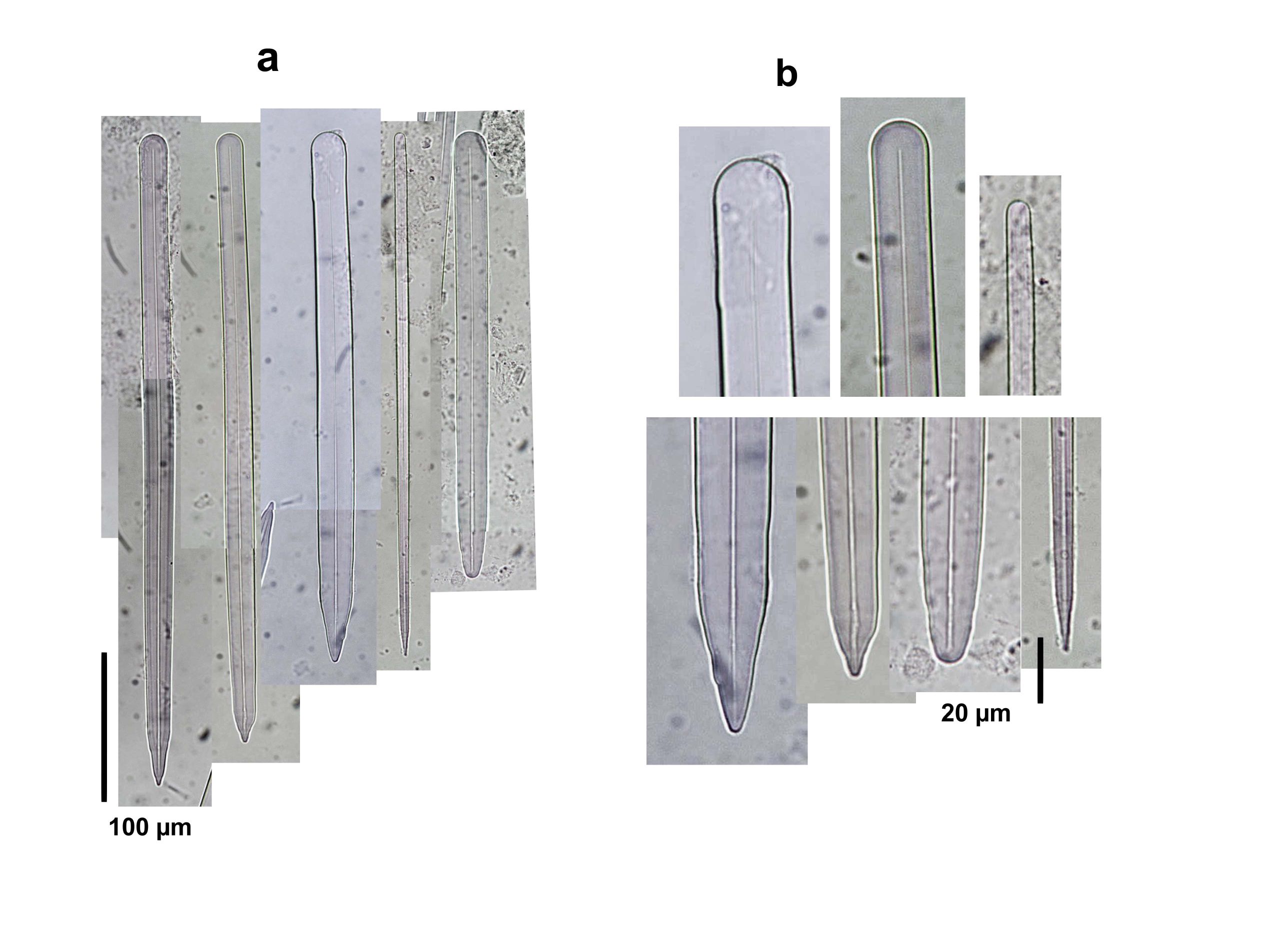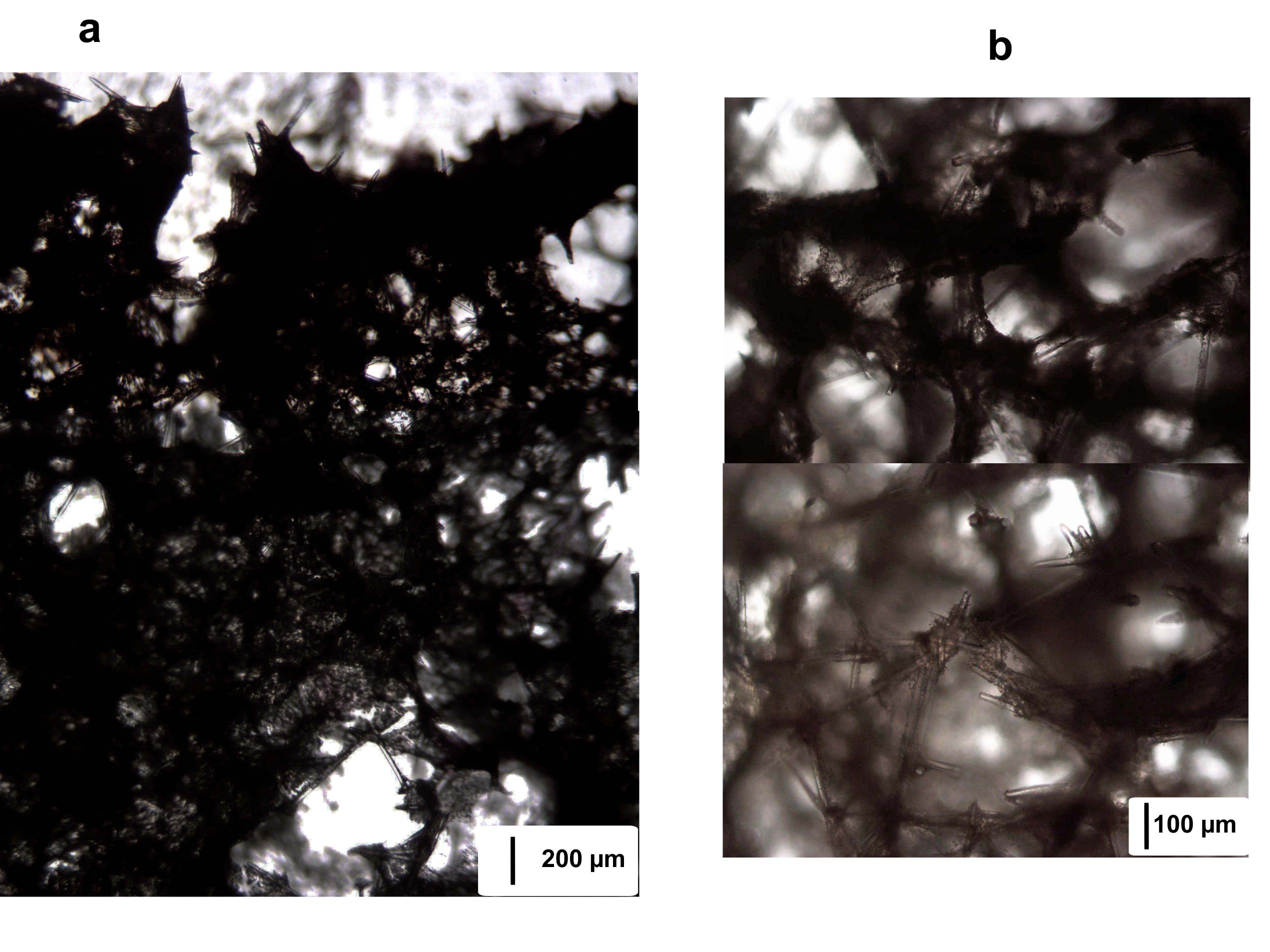the Sponge Guide - www.spongeguide.org
Observed Characteristics:
gray
yellow
brown
purple-violet
cinnamon-tan
encrusting
lobate
massive
crumbly
Colombia
Panama
Saint Eustatius
Species Description and Notes
Description: Irregular encrustations, up to 2-3 cm in thickness, following the contours of the substratum, and reaching tens of cm in diameter (sometimes up to 1 m). Surface is generally uneven, microrugose, but can be smooth, but always having many low mounds and irregular lobes; sometimes lobes grow upwards and ramify. Oscules up to about 5 mm, scattered, located either on top of elevations or in depressions. Color usually light to dark purple or golden brown; shallow-water specimens are dull golden yellow with tan tinges in concave areas; subsurface dark purple, interior cream. Consistency very crumbly. The architecture of the skeleton is difficult to discern owing to the remarkable amount of dark granular cells that block light under the microscope. It appears to be an irregular isotropic unispicular to paucispicular reticulation, with no surface specialization. Spicules of material from St. Eustatius are slender, curved styles, 330-505 µm long and 2.5-13 µm wide, with terminal or subterminal irregular swellings and many with characteristically v-shaped tips; there are fewer oxeas of about the same size, most with mammiform tips which are slightly asymmetric. Material from the continental coast of Colombia and from Panama lacks oxea and the styles are much stouter, 380-500 µm by 3-25 µm wide.
Notes: This is a shallow to deep reef sponge, living usually exposed. It has the dark granular cells characteristic of the genus Svenzea, and we recently saw the large yellow egg-larvae which occur in other species of this genus (see also Svenzea zeai in this guide and Rützler et al., 2003). The contrast in color that appears to exist between shallow and deeper-dwelling specimens is remarkable, but they coincide in consistency, spiculation and in the presence of dark granular cells. Most specimens from the localities where this species was originally described (Belize, Jamaica) have also oxea spicules, but these are reported to be sometimes absent. The greater thickness of Colombia and Panama spicules is consistent with the greater amount of silicon in neritic continental waters.
Author Reference: Alvarez, van Soest & Rützler, 2002
Link: World Porifera Database
Tissue and Spicule Images

Spicule Images: a) Styles; b) ends of styles; c) ends of oxeas; d) oxeas. Sample from St. Eustatius.
Source Specimen: http://www.spongeguide.org/ thumbs/00124/01504.JPG

Spicule Images: a) Styles; b) ends of styles. Sample from the Bahamas. Sample from the Islas del Rosario, Colombia.
Source Specimen: http://www.spongeguide.org/ thumbs/00115/01962.jpg

Spicule Images: a) Styles; b) ends of styles. Sample from Bocas del Toro, Panama.
Source Specimen: http://www.spongeguide.org/ thumbs/00115/01974.JPG

Tissue Images: a) Perpendicular section at the surface; b) enlargement of the choanosome. Sample from Bocas del Toro, Panama.
Source Specimen: http://www.spongeguide.org/ thumbs/00115/01974.JPG
Images
Svenzea cristinae
Location: Saint Eustatius
Photographer: Joseph Pawlik
![<i>Svenzea cristinae</i> <br />[Colombia, Islas del Rosario]](thumbs/00115/01962.jpg)
Location: Colombia, Islas del Rosario
Photographer: Sven Zea
Location: Panama, Bocas del Toro
Photographer: Sven Zea
Location: Panama, Bocas del Toro
Photographer: Sven Zea
Location: Panama, Bocas del Toro
Photographer: Sven Zea
Location: Panama, Bocas del Toro
Photographer:
Location: Panama, Bocas del Toro
Photographer: Sven Zea
Location: Panama, Bocas del Toro
Photographer: Sven Zea
Location: Panama, Bocas del Toro
Photographer: Sven Zea
Location: Panama, Bocas del Toro
Photographer: Sven Zea
![<i>Svenzea cristinae</i> <br />[Colombia, San Andrés Archipelago, Serrana Bank (atoll)]](thumbs/00115/01971.jpg)
Location: Colombia, San Andrés Archipelago, Serrana Bank (atoll)
Photographer: Sven Zea
Location: Panama, Bocas del Toro
Photographer: Sven Zea
Location: Panama, Bocas del Toro
Photographer: Sven Zea
Location: Panama, Bocas del Toro
Photographer: Sven Zea
![<i>Svenzea cristinae</i> <br />[Colombia, Isla Fuerte]](thumbs/00115/01975.jpg)
Location: Colombia, Isla Fuerte
Photographer: Sven Zea
![<i>Svenzea cristinae</i> <br />[Colombia, Bajo Bushnell]](thumbs/00115/01976.jpg)
Location: Colombia, Bajo Bushnell
Photographer: Sven Zea
![<i>Svenzea cristinae</i> <br />[Colombia, Bajo Bushnell]](thumbs/00115/01977.jpg)
Location: Colombia, Bajo Bushnell
Photographer: Sven Zea
Location: Colombia, San Andrés Archipelago, San Andrés Island
Photographer: Sven Zea